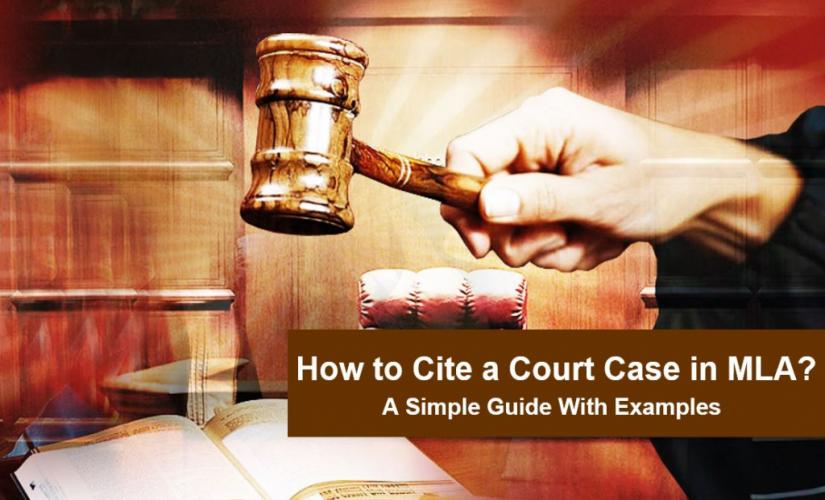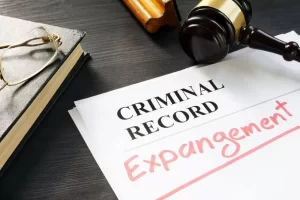How to Cite a Court Case
How to Cite a Supreme Court Case
If you’re working on a legal research paper, it’s important to know how to cite Supreme Court cases correctly. A proper citation is necessary to give credit to the sources you have used and to allow readers to locate the cases you are referencing. In this article, we will provide a step-by-step guide on how to cite a Supreme Court case, including the required elements and citation formats1. Introduction
When citing a Supreme Court case, it’s important to follow a specific format to ensure that your citation is complete and accurate. In general, a Supreme Court citation includes the case name, volume and reporter, page number, and year of decision. Additionally, pinpoint citations may be included to indicate the specific location of the cited material within the case
Why Citing Court Cases is Important
Citing court cases correctly is an important aspect of legal writing. Proper case citation allows readers to efficiently locate the case you are referring to. It also demonstrates attention to detail and lends credibility to your work. When judges, lawyers, law students, and others in the legal profession cite cases, they follow a specific format to identify the case, court, year, and other key details. Learning how to cite cases properly is a fundamental skill for anyone working in the law.
The Basic Structure of a Supreme Court Citation
A Supreme Court citation typically follows the following structure:
- Case Name
- Volume and Reporter
- Page Number
- Year of Decision
For example, the citation for Brown v. Board of Education would be:
- Brown v. Board of Education
- 347 U.S. 483
- 1954
Identifying Key Components of a Case Citation
To understand how to cite a court case, you first need to identify the core components of a case citation. These include:
Case Name
The case name should be written in italics and include the names of the parties involved. The first party listed is the petitioner, while the second party is the respondent. For example, in the case of Brown v. Board of Education, Brown is the petitioner and Board of Education is the respondent.
The name of the case is usually expressed as:
Plaintiff v. Defendant
For example:
Roe v. Wade
The plaintiff is the party who brought the legal action and the defendant is the party being sued or charged with a crime.
Volume and Reporter
The volume and reporter indicate the source where the case was published. The volume number refers to the volume of the reporter in which the case was published, while the reporter is the title of the publication. In the citation for Brown v. Board of Education, “347” refers to the volume number of the United States Reports, which is the official reporter for Supreme Court cases. “U.S.” indicates the title of the reporter.
Page Number
The page number indicates the specific page where the case begins. In the citation for Brown v. Board of Education, “483” refers to the page where the case begins in the United States Reports.
Year of Decision
The year of decision indicates the year in which the Supreme Court issued its decision. In the citation for Brown v. Board of Education, “1954” refers to the year in which the Supreme Court issued its decision.
Court Abbreviation
Knowing which court decided a case is crucial. Is it a state court case or a federal case? What level of court is it from? This info helps readers evaluate the precedential weight of the case.
Federal Courts
For federal cases, common abbreviations include:
- U.S. – United States Supreme Court
- F. – Federal Reporter (Circuit Court of Appeals cases)
- F. Supp. – Federal Supplement (District Court cases)
State Courts
State court abbreviations vary but generally:
- Use the two-letter postal abbreviation for the state name
- “Ct” for Court
- Sometimes the level of court is abbreviated too, such as “S. Ct.” for Supreme Court.
So a California Supreme Court case would be abbreviated “Cal. S. Ct.”
Citing Federal Cases
Let’s go through some examples of how to cite federal cases at the Supreme Court, Circuit Court of Appeals, and District Court levels.
Supreme Court Cases
For U.S. Supreme Court cases, use this format:
Case name, U.S. volume number first page, year decided
For example:
Roe v. Wade, 410 U.S. 113, 1973
Note the U.S. Supreme Court reporter is abbreviated simply as “U.S.”
Circuit Court of Appeals Cases
For U.S. Circuit Courts of Appeals, use:
Case name, F.2d/F.3d volume number first page, year decided
For example:
United States v. Manarite, 57 F.3d 1407, 1995
Here, “F.3d” indicates the Federal 3rd Reporter series. 2d and 3d indicate the series number.
District Court Cases
For U.S. District Courts, cite as follows:
Case name, F. Supp. 2d/F. Supp. 3d volume number first page, year decided
For example:
Chen v. Adorama Camera Inc., No. 19-cv-6352, 2021 F. Supp. 3d 331, 2021
“F. Supp. 3d” refers to the Federal Supplement 3rd series.
Citing State Cases
Now let’s look at how to cite cases from state courts. The format varies depending on whether it’s a published or unpublished decision.
Citing Published State Cases
For published state court decisions, cite like this:
Case name, abbreviated state reporter volume number first page, year decided
For example:
Commonwealth v. Smith, 93 Mass. 523, 1865
This cites a Massachusetts Supreme Court case reported in the Massachusetts Reports in volume 93 on the first page 523.
Some states have their own specific official reporters. For others, you may need to use a regional reporter abbreviation, such as:
- A. – Atlantic Reporter (covers several Northeastern states)
- N.W. – North Western Reporter (covers several Midwestern states)
- P. – Pacific Reporter (covers several Western states)
Citing Unpublished State Cases
If a state case is unpublished, cite it like:
Case name, No. docket number, year decided
For example:
Allen v. Clark Construction, No. B285137, 2020
This cites an unpublished California Appeals Court case. The docket number is given in lieu of a reporter volume and page.
Using Alternative Case Citations
Sometimes you may see a case cited in an alternative way, especially if it has been published in multiple reporters.
For example:
Miranda v. Arizona, 384 U.S. 436, 86 S. Ct. 1602, 16 L. Ed. 2d 694, 1966
This cites the U.S. Supreme Court’s famous Miranda rights case with a citation to the official Supreme Court Reporter (“S. Ct.”) as well as the United States Reports (“U.S.”) and Lawyers’ Edition 2d (“L. Ed. 2d”) reporters.
Having alternative citations can be helpful, but choose one as the primary citation for consistency.
Formatting Case Citations
Let’s discuss how to incorporate case citations within your legal writing.
In-Text Citations
When citing a case in running text, enclose the citation in parentheses like this:
In Roe v. Wade (410 U.S. 113, 1973), the Supreme Court ruled that…
Citations in Footnotes/Endnotes
In footnotes or endnotes, cite the case as normal but without parentheses:
Roe v. Wade, 410 U.S. 113, 1973.
Examples of Common Case Citations
Below are examples illustrating how to cite various federal and state court cases:
U.S. Supreme Court
Brown v. Board of Education, 347 U.S. 483, 1954
Obergefell v. Hodges, 135 S. Ct. 2584, 2015
Federal Circuit Courts
United States v. Nixon, 418 F.2d 683, 6th Cir. 1969
Leatherman v. Tarrant Cty. Narc. Intelligence &Coordination Unit, 954 F.2d 1054, 5th Cir. 1992
Federal District Courts
U.S. v. Manafort, 315 F. Supp. 3d 799, E.D. Vir. 2018
FTC v. Qualcomm Inc., 411 F. Supp. 3d 658, N.D. Cal. 2019
State Courts
Lawrence v. Texas, 41 S.W.3d 349, Tex. Ct. App. 2001
MacDonald v. Moose, 4 Va. App. 439, 1987
Citing Cases from Online Databases
Today many researchers access case law through online databases like LexisNexis, Westlaw, and Google Scholar. These may have their own citation formats:
LexisNexis
Cite a Lexis case like:
Case name, Lexis database identifier
For example:
Graham v. Florida, Lexis 2008 U.S. Briefs 240
Westlaw
Cite a Westlaw case like:
Case name, year WL database identifier
For example:
Atlantic Richfield Co. v. Farm Credit Bank of Wichita, 1990 WL 151140
Google Scholar
Cite a Google Scholar case like:
Case name, year Google Scholar LEXIS unique ID number
For example:
Wilkens v. Gaddy, 2021 Google Scholar LEXIS 93871
Using Et Al and Id in Case Citations
A few other tips:
- When a case has 3+ parties on one side, use “et al.” after the first party name.
- Use “Id.” when citing the immediately preceding case again in a footnote.
Tips For Citing Supreme Court Cases
When Citing Supreme Court Cases, Here Are A Few Tips To Keep In Mind:
- Always Double-Check Your Citations To Ensure That They Are Accurate And Complete.
- Use The Correct Citation Format For Your Paper Or Publication.
- If You’re Unsure About How To Cite A Particular Case, Consult A Style Guide Or Ask Your Instructor For Guidance.
- Consider Using An Online Citation Generator, But Be Sure To Double-Check The Generated Citation For Accuracy.
Conclusion
Properly citing court cases may seem complicated, but following the basic formatting rules makes it fairly straightforward. Start by identifying the core components of the case citation, including name, year, and court abbreviation. Pay close attention to precisely formatting citations for federal versus state courts, published versus unpublished decisions, and the specific court level. Following the conventions of legal citation ensures readers can efficiently look up the cases being referenced. With practice, citing cases becomes second nature for legal professionals. Mastering this fundamental skill is essential for writing legal memoranda, briefs, motions, judicial opinions, and other legal documents.
FAQs
What if I don’t have all the citation information about a case?
Include as much key information as you can, such as the case name, year, and court. Make a note if published status is unknown.
Are case citations italicized or underlined?
No – case names in citations are not italicized or underlined. They are written in plain text.
What if a case is commonly known by a short name?
You can use a common short name or abbreviation on subsequent citations but still include main parties. For example – After citing Roe v. Wade in full once, you may refer to “Roe” later.
Should I include case citations in court documents?
Yes, court rules generally require citations for any cases relied on as precedent. Check local court rules for specifics.
How do I cite a case cited within another source?
Call this “indirect citation.” For example: “Roe v. Wade, as cited in…” Use when unable to access the original case.








